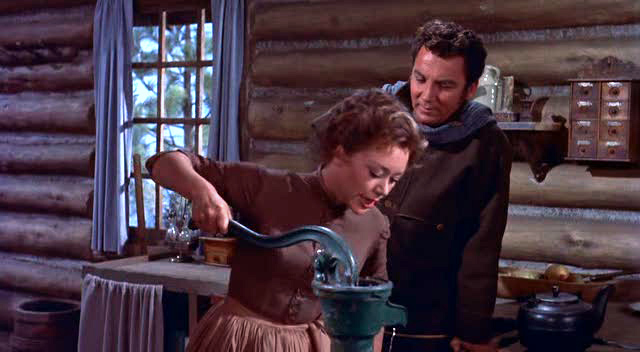 |
| Landis Valley |
Dean and I watched an old movie recently that I quickly warmed up to.
"Our Vines Have Tender Grapes" is so sweet I plan to share it with my grandchildren.
Acting extravagantly, I bought the DVD.
I photographed it surrounded by my tiny fabric yo-yo garland that I added more yo-yos to recently.
While I was standing in the kitchen over Thanksgiving holiday telling Sophia about it, ending with "I got the DVD," I heard a funny little echo emanating from the next room. It came from the munchkin mouth of 2-year-old Eloise. Learning to talk, she regularly repeats the word she hears at the tail end of a sentence. I thought I heard, "No DVD." I asked her mother, "Did you hear that?"
Sophia said,"Yes, I guess she was born in the computer age, the generation of no DVDs."
 |
| Landis Valley's roomy Yellow Barn where wedding receptions are held. |
 |
| Landis Valley, work horse |
One farming couple (not too young) have one child, little Selma. We see the story through Selma's eyes.
Father-daughter heart-to-heart talks crop up. Selma has an inquiring mind. She isn't afraid to ask questions about her world. She trusts her father will never say, "I don't know. Go ask your mother, I'm busy."
 |
| He came up to Dean to have his photo taken. So Dean did. |
He stops to answer Selma, recognizing her questions to be valuable teaching moments when he can sensitively impart truth to her.
Meanwhile our young men are going overseas to fight for freedom. At home, people are fighting for freedom and the American way-of-life in their own humble hard-working way.
Christmastime brings the community to church to worship Christ the newborn King.
Why am I smitten with this film? The loving kindness and generosity of the characters during a trying time, is very touching.
One of the little books I in my Christmast stash is Let's Keep Christmas, illustrated by Barbara Cooney in 1952.This uplifting sermon by Peter Marshall takes five minutes to read and is a pleasant way to end an evening.
 |
| Landis Valley, Children making a snowman.Grandma watches while she sweeps the porch. |
 |
| My daughter Yolanda makes delicious treats at holiday time. She made us some ginger bread. |
One of the fun fairy-tale-like Christmastime films I used to have on VHS is "The Snowman." The music is gorgeous. It is based on a picture book by Raymond Briggs. (The Snowman's nose is a tangerine.)
I told a young mother about this British film produced in the 1980s because she hadn't heard of it so I thought to recommend it here.
The snowman (like Frosty the Snowman) has magic powers that enable him to fly through the air and take the boy who built him to the North Pole. There the snowman introduces the boy to Father Christmas. What a delight! They join a merry party. Then they fly home. You can guess the end of the story because you know what happens to all snowmen.
It is a silent film with a dream-like quality (the boy wakes up from a dream) but the music in this pantomime blends-in well and enhances the plot. Your children will be riveted.
Here's another film that is a slice of Americana. It claims to be true. The story was made public originally in a magazine article. "All Mine to Give" is filled with hope. A young immigrant couple from Scotland (with bonnie accents) carve out a life for themselves in the 19th century, among a community of God fearing people in the mid-west.
Dad makes sure Mom has a pump inside their log cabin - quite an innovation in those days. They love each other dearly but their relationship is humorously "real." Dad sees life through the wisdom of poet Robert Burns. Sickness eventually takes both hard-working parents and leaves their six children orphaned. What becomes of the children?
When Dean and I watched it before I knew what was happening my face became wet with tears. The children are so cute, especially on Christmas Day. You'll need a tissue box to take care of a whirlpool of different emotions in the final scene.
This is my take. Loving kindness is not possible without a degree of sympathy, courage, service, and generosity. You'll find all five virtues tucked inside this true story. Warner Brother's trailer of the film can be found on YouTube.
 |
| Landis Valley model of the yellow barn. |
May we all aspire to be more like our Lord.
End Notes
For easy access to read more about the resources above, I link them here.
Our Vines Have Tender Grapes
Lets Keep Christmas
The Snowman
All Mine to Give
A Man Called Peter by Catherine Marshall. This is the award-winning film based on the book.
 |
| Ginger cookies at Landis Valley |
Karen Andreola









































